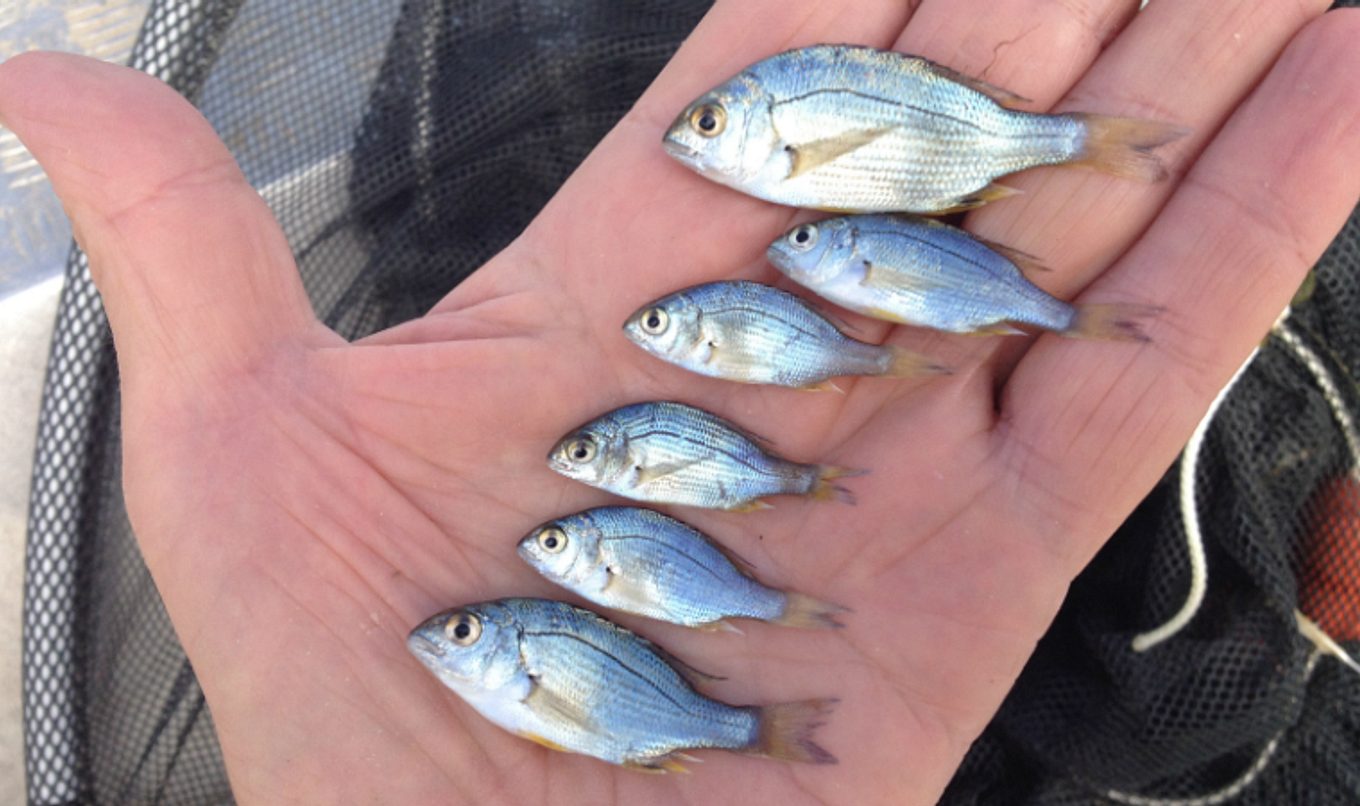Baby black bream fish return to the Coorong
The number of baby black bream in the Coorong estuary has recently increased thanks to environmental water delivered to the Lower Lakes and Coorong.

Department for Environment and Water (DEW) spokesperson Adrienne Rumbelow said black bream population in the Coorong has been in severe decline since the late 1980s, with little to no baby black bream recorded in recent years.
“The ecosystem of the Coorong is still recovering post-drought, and this includes populations of long-lived fish like black bream,” Ms Rumbelow said.
“The commercial fishery catch of black bream in the Coorong over the last nine years has been only five per cent of what it was in the mid-1980s.”
Commercial fishers advised DEW in October 2017 that they had seen adult female black bream below the barrages, in good condition and ready to spawn.
Ms Rumbelow said the tip prompted the department to work with local scientists and the community to manage environmental water during spring and summer to maintain barrage releases and improve water quality in the Coorong.
“Between October 2017 and February 2018, around 500 gigalitres of environmental water was delivered to improve the health of the Coorong, including to support black bream spawning and the young to grow,” Ms Rumbelow said.
“The environmental water to the Coorong was critical in creating a salt wedge, which is an area where freshwater sits above salt water. Salt wedges are needed to keep black bream eggs and larvae buoyant and they also provide food for larval fish to develop and grow.”
During March and April 2018 the South Australian Research and Development Institute (SARDI) Aquatic Sciences carried out fish monitoring in the Coorong and recorded more than 100 black bream fingerlings.
The environmental water was provided by the Commonwealth Environmental Water Holder in coordination with the South Australian Government and The Living Murray program. Monitoring by SARDI was also funded by the South Australian Government, the Commonwealth Environmental Water Holder and The Living Murray program.
The Living Murray is a joint initiative funded by the New South Wales, Victorian, South Australian, Australian Capital Territory and Commonwealth governments, coordinated by the MDBA.

